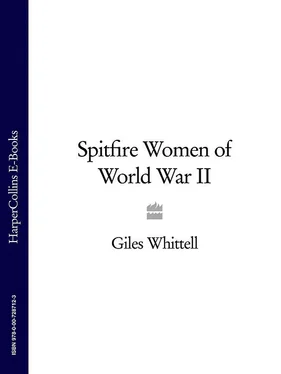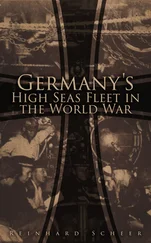Then instinct took over. She reached up, took a last breath and pulled the red canopy release lever above her head. A giant bubble from the Barracuda’s oversized cockpit would then have headed for the surface. It could have taken her with it if she had unclipped her straps and parachute harness – but she hadn’t. ‘I wouldn’t have had the intelligence to have worked those things out,’ she said. ‘I was working on reflexes. I was acting purely like an animal. I must have bashed the thing that released the harness once the water had come in. It took forever to get to the top.’
Even so, Betty was alive when she bobbed to the surface. There was a strong swell and the water was bitterly cold. She had no life jacket and the cloud that had engulfed her aeroplane now enveloped her. She had no way of knowing how far she was from the shore until a wave lifted her and she glimpsed it for an instant, too far to swim to but close enough to let her hope. She started to shout.
John Morris, skipper of the trawler Providence from the port of St Monans, would never have been anywhere near Betty had he not developed engine trouble earlier that morning. Nor would he have paid much attention to what sounded at first like a seal if it hadn’t been so persistent. He altered course towards the barking, and Betty’s head appeared out of the mist.
‘All I can remember after that are the words “Hang on, laddie”,’ she said, sixty-one years later, sipping her chenin blanc on a cool South African afternoon. ‘And everything going black, and tea being poured over my hands to warm them up.’ She paused, blinking and smiling almost apologetically as if still unable to fathom her good fortune. ‘Why that dear little fishing boat should have come chugging along just then … really and truly, it was a miracle.’
Yet it was not a miracle that she has often spoken about since. The stories of why Betty Keith-Jopp is so reluctant to talk about her escape from the bottom of the sea, and how she came to be flying into a cloudbank in a Barracuda in the first place, are among those this book tries to tell. They are part of the larger tale of a unique sisterhood of flying addicts – young, hopeful and ridiculously brave – who came to England from five continents to ferry combat aircraft for the Air Transport Auxiliary in the war. There were 164 of them in all, and they were the only women from among the Western Allies who flew in the war. (The Women’s Auxiliary Air Force in Britain stayed firmly on the ground and in America the Women’s Air Service Pilots – or WASPs – flew too, but never less than 3,000 miles from a war zone.) They flew torpedo bombers if they had to and Lancasters if they lasted long enough; but they had eyes mainly for the fastest aerial hot-rods of the age – Hurricanes, Mosquitoes and the plane that many of these ATA women came to feel had been designed especially for them, the Spitfire.
One of these pilots, Margaret Frost, lived for many years in an ancient half-timbered cottage on the far side of my grandmother’s favourite flower bed in Sussex. I’d always known she flew Spitfires in the war, and occasionally she would appear on television on Remembrance Sunday in her best grey overcoat, dwarfed by Guards officers, laying a wreath at the Cenotaph. But I never asked about her flying – that might have been indelicate; and then she moved to Wales.
About twenty years later another ATA pilot, Ann Wood, walked up and introduced herself to me outside the old town hall in Newcastle, New Hampshire. She looked and talked like Katharine Hepburn in her septuagenarian prime, and the only reason I had her attention was that the occasion was my wedding. She had been my wife’s neighbour in Massachusetts for twenty years, and a friend of Margaret Frost’s since 1942.
In that absurd understatement of the war years, they had both ‘done their bit’. Margaret would only venture that she had done her bit for England – and then only if pushed. But Ann was quite comfortable with the idea that she’d done hers for freedom; for a way of life she consciously held dear. She arrived in Liverpool in May 1942, one of twenty-five American women to join the ATA. She flew warplanes continuously until the end of 1945 and she told stories of craziness and courage that I had never heard from our side of the flower bed in Sussex; stories of upside-down engine failure and squeezing under bridges at high tide; of dodging U-boats and romancing Earls and cooling beer down for the Atlantic ferry boys by flying it to 10,000 feet. It turned out that she had also kept a meticulous, clear-eyed diary that serves as a case study of fearlessness, and of mutual Anglo-American incomprehension.
Ann died as this book was being written, and it would have benefited from her criticism. But she and her fellow Spitfire women still deserve to be remembered for the quiet revolutionaries they were; I hope this helps.
1
Monday, 22 September 1941 was a miserable day for flying. Low cloud covered England from Bristol to the Scottish borders. Where the overcast thinned an opaque autumn haze still blurred the horizon in every direction, and over the Midlands it mixed with smog from the munitions factories, turning the barrage balloons from a deterrent into an almighty trap. Even so, at about three in the afternoon, a lone Spitfire took off from Prestwick and headed south.
It climbed over the Ayrshire hills, then sped down the Nith valley to Dumfries and crossed the Solway Firth. It picked up the main west coast railway line at Carlisle and followed it past Oxenholme to Appleby, then headed east through the Pennines in search of clearer skies. Visibility did improve, but not by much. Reaching the London-to-Edinburgh line just south of Darlington, the plane turned south again and pressed on through the murk, England slipping beneath it as the enormous Merlin engine in its nose steadily drained its 90-gallon tanks.
The Spitfire was running almost on empty when, soon after 5 p. m., it descended towards Maidenhead and landed safely at what had been the peacetime home of the De Havilland School of Flying at White Waltham in the Berkshire countryside. It was now headquarters of the ATA. The figure who eased herself out of the cockpit once she had taxied to the dispersal area and cut the engine was perhaps the finest woman pilot then flying for the Western Allies. There was no shortage of contenders in both Britain and America, and as Mother Russia fought for survival against the Nazi onslaught the following year her daughters excelled in the air, even in combat. But they had no-one quite like Lettice Curtis.
She was tall and slim, with angular features and a tentative smile. She was a triple Oxford blue (in tennis, swimming and lacrosse) with a degree in mathematics and a reputation, even at twenty-three, for extreme impatience with anyone she thought deserved it. Stepping off the wing of her Spitfire in the dark blue uniform of the Air Transport Auxiliary, she took her delivery chit to the operations room beside White Waltham’s grass airstrip and handed it over with nothing much to report. No-one had been killed. No aircraft had been damaged. There had been no sightings of the enemy even though the entire route was within range of the Luftwaffe and bombing raids were still routine a year after the Battle of Britain. No-one had even tried a loop or a roll for the hell of it – and that was the point. No-one else had been flying.
For most pilots the day had been a washout. That meant unflyable; not worth the risk of ditching in the Wash or sudden death on the slopes of Black Cwm or Shap Fell. In particular, a group of American pilots based at White Waltham, all of them men, had tried taking off that morning. Every one of them turned back.
‘It was many weeks later that I learned this, and of the consternation caused by the arrival of a female in a Spit’,’ Lettice Curtis wrote, and the sentence is laden with meaning. ‘Consternation’ is an exquisite understatement for the pique that a group of pilots apprenticed in barnstorming and crop-dusting across the American mid-west would actually have felt. And Curtis’s satisfaction at having pulled off what the Yanks had balked at may simply have been too intense to put into words. For she was a remorseless competitor despite an expensive education in schools that valued refinement above all, and she had an unhappy knack of seeming less than cordial to Americans. Most of a lifetime later I sat down with another woman pilot in a retirement home in Oregon to talk about her wartime flying. On most subjects she was thoughtful and diplomatic, but when I mentioned Curtis her first words were: ‘Lettice always looked on Americans as if they were a bad smell.’ Which was unfortunate, because more were on their way.
Читать дальше












